Monstera plants, whose full name are Monstera Deliciosa, are actually pretty easy to take care of.
They reign from southern Mexico and Panama, and because of the holes they create their leaves as they mature, they are often referred to as Philodendron Split Leaf or the Swiss Cheese Plant.
Monstera leaf holes are a byproduct of originating in the rainforest, where vegetation above blocks sunlight. So the holes are to allow sunlight to get to the bottom leaves as well as the top.
Related: Learn to Care for Pilea Plants, Calathea, Fiddle Leaf Figs, Jade Plants, Golden Pothos, Snake Plants, Rubber Trees, Spider Plants, Christmas Cactus, Poinsettia, Peace Lilies, and String of Pearls Plants.
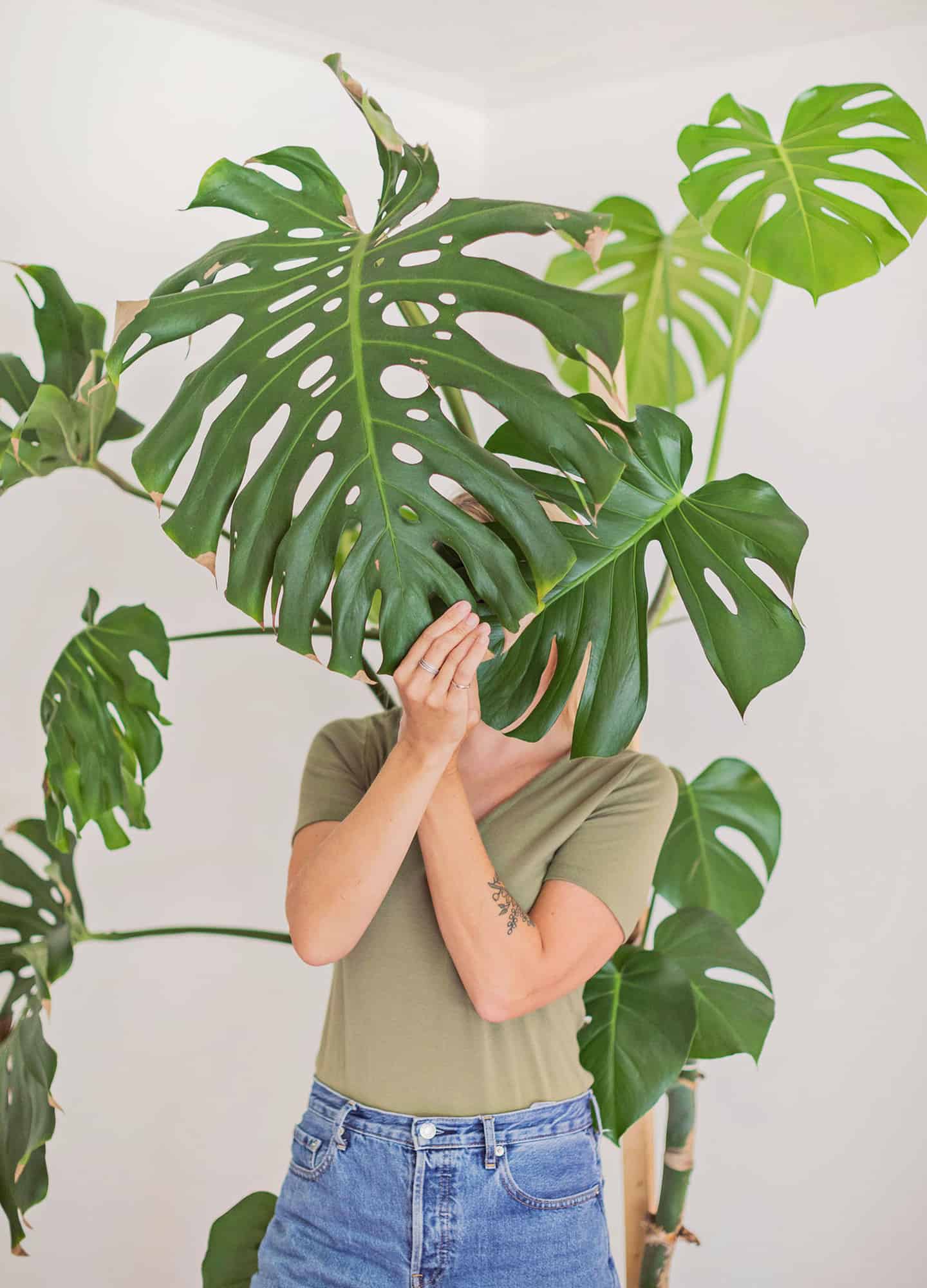
How Often Should I Water Monstera Plants?
Monstera like regular watering. Monsteras prefer slightly moist soil and generally like to dry out just a bit between waterings.
They are epiphytes with aerial roots (a plant that grows on another plant in its natural habitat), so they don’t tolerate soggy soil. For a rule of thumb, once the top 2 to 4 inches of the soil are dry, your Monstera could use some watering.
Since my Monstera, Fran, is in a large pot, I give her quite a bit of water once a week in the growing season, which is spring through early fall, and then I taper off quite a bit in the winter.
A long time ago, I decided I would regularly water all of my houseplants once a week, choosing Saturday as the day I’d remember to do it most consistently, and I have stuck to that plan for many years.
I adjust the amount of water I give each plant based on what the soil feels like when I check it, as well as the type of plant itself, knowing some plants like more water, some like less.
If the soil feels soggy at all, I skip watering that week. By planning to water every plant in the house weekly, I never forget about one, and have some dedicated time each week to check them for signs of stress or pests, dust them off, or prune them if needed.
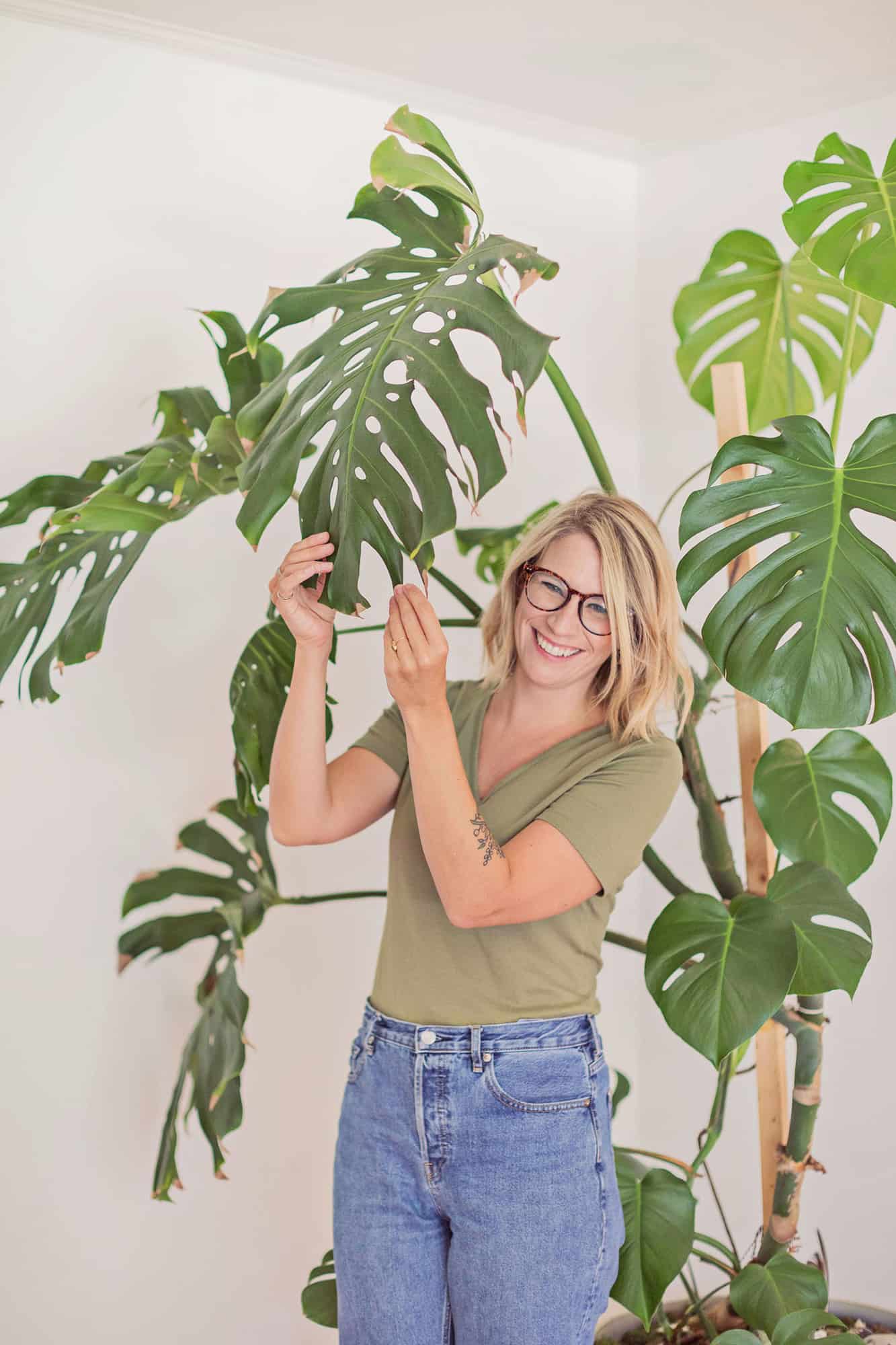
How Much Sunlight Do Monstera Plants Need?
Monsteras like bright indirect light. They can adjust to medium light, but might get leggy in that environment. So, I placed her in a room that has large west-facing windows.
The windows are all the way on the other side of the room from where Fran sits, but the room gets enough light in the afternoons and evenings that she seems to love it in that spot. (In fact, all my plants love that room, no matter where they sit).
She never gets direct beams of light so her leaves don’t burn, which is important to consider when choosing a spot for a Monstera, and she gets to show off as the largest in a room filled with plants.
Should I Fertilize My Monstera Plant?
Fertilizers can be tricky, so once I found one I could use on all of my houseplants, I bought a giant bottle and that was that.
The fertilizer I use is one that I add to my water, so I fertilize once a month in the growing season at the beginning of each month with SUPERthrive.
It is a bit pricey, but in my experience it has helped my plants stay healthy and fed better than any other fertilizer I have come across. I swear by it!
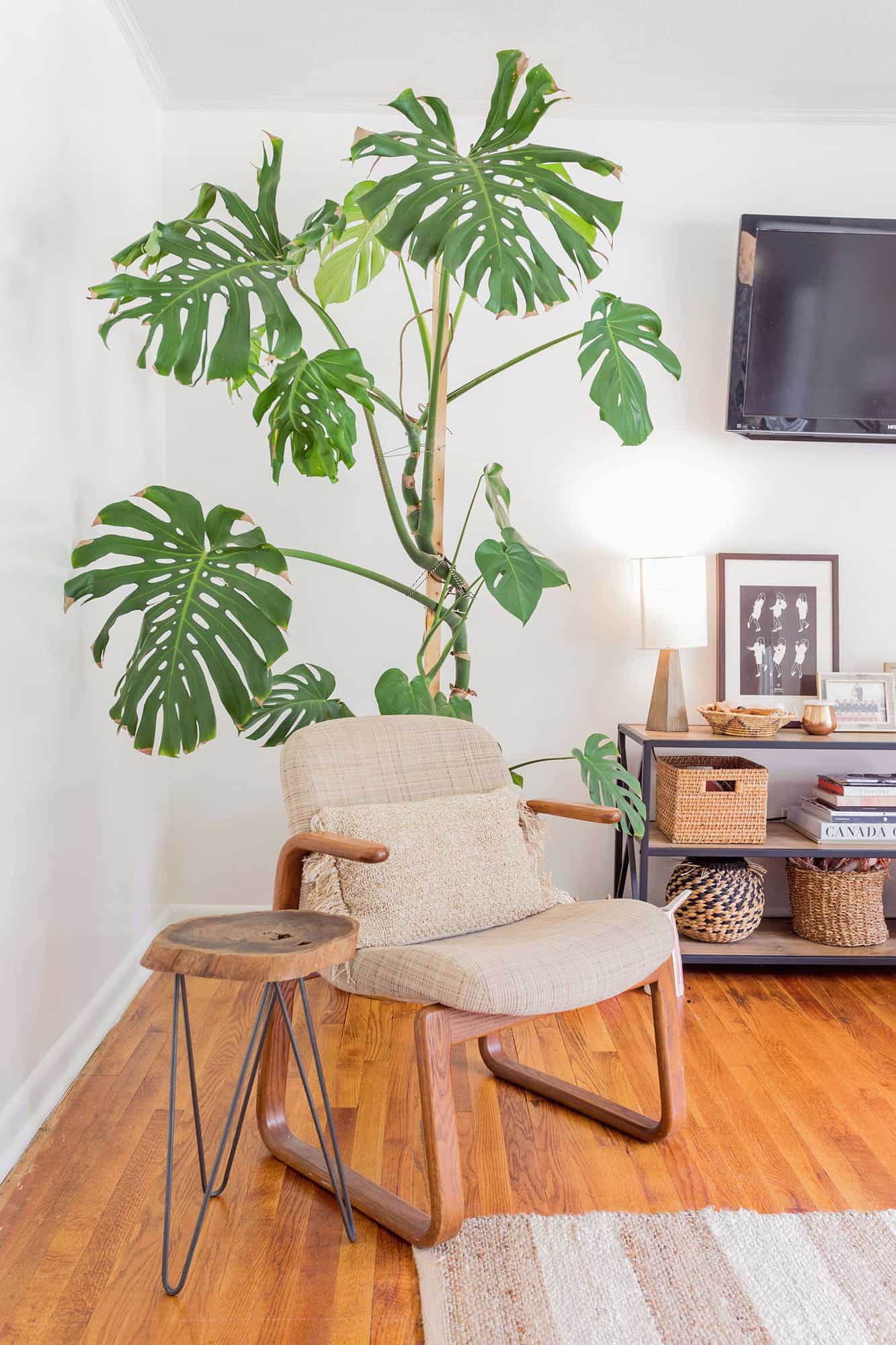
Diagnosing Common Problems
- Curling leaves - may be under watering, check if soil is dry or moist
- Yellowing leaves - may be overwatering, check if soil is dry or soggy. Could also be lack of enough indirect sunlight
- Blackish stems - may be over watering, check if soil is dry or soggy.
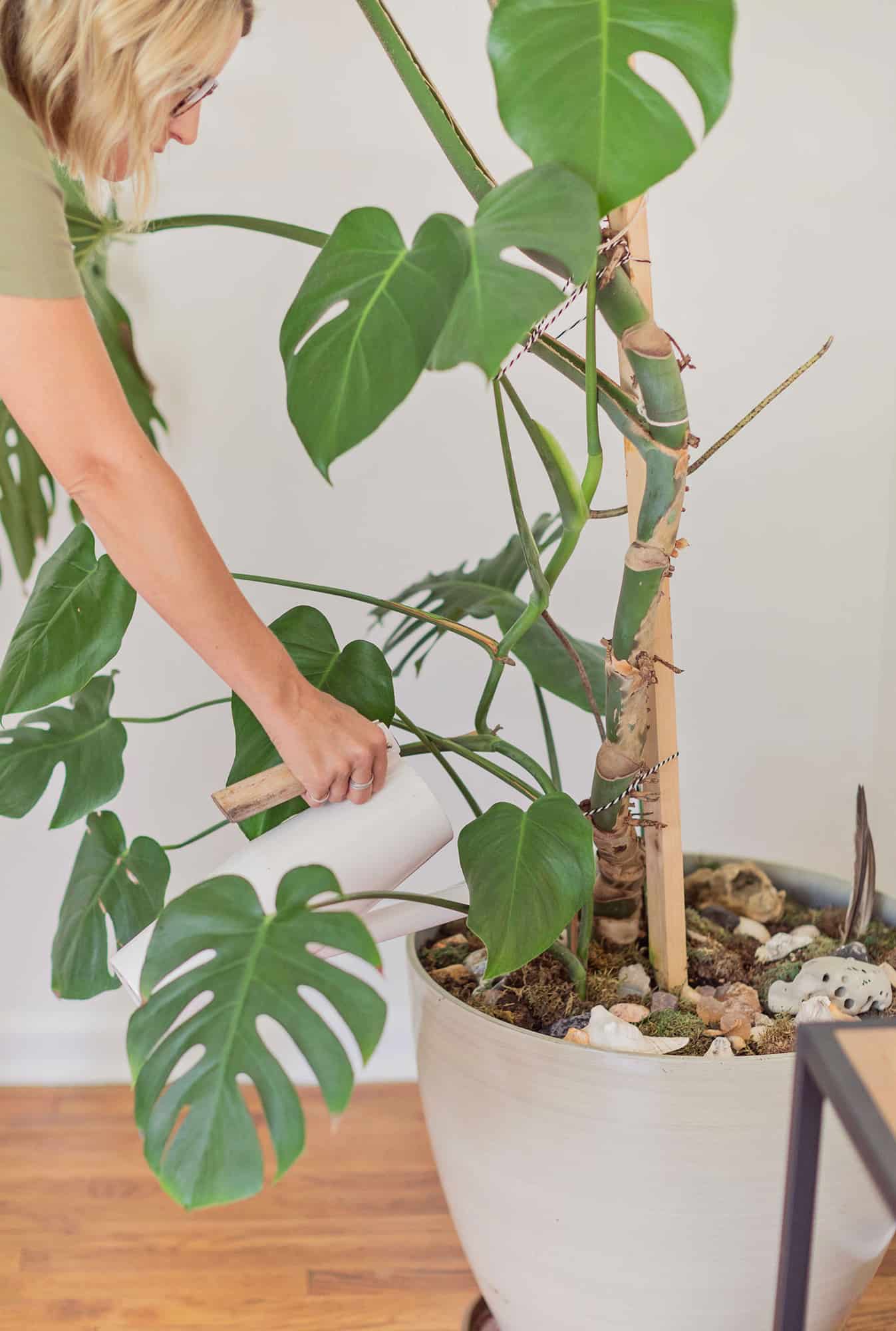
Staking Monstera Plants
In the wild, Monsteras climb up on other trees as they grow, and can grow up to 66 feet tall! Inside they can only get to about 9 feet tall, and will use a stake (preferably covered in moss but mine is not) as their inside host.
I learned the hard way that staking is a must for Monsteras through taking care of another smaller, but bushier one I have in a different room.
For a long time it wasn’t staked, until one day as I was dusting the leaves, I knocked the whole thing over onto the desk below where it perched, and sadly, many stems tore off the main plant.
I was able to propagate some of those stems, thank goodness, but I learned my lesson. Stakes help the plant grow upward and can really help keep all those big leaves balanced.
Propagating Monstera Plants
I planted some of the stems I propagated alongside Fran in her pot! I figured there was enough space and Fran could use a little company, and the addition made Fran’s bottom half more proportional with her giant top half.
She does have some new smaller leaves off a node at the bottom of her trunk, but the rest of the leaves are from a different Monstera.
Related: How to Propagate Plants
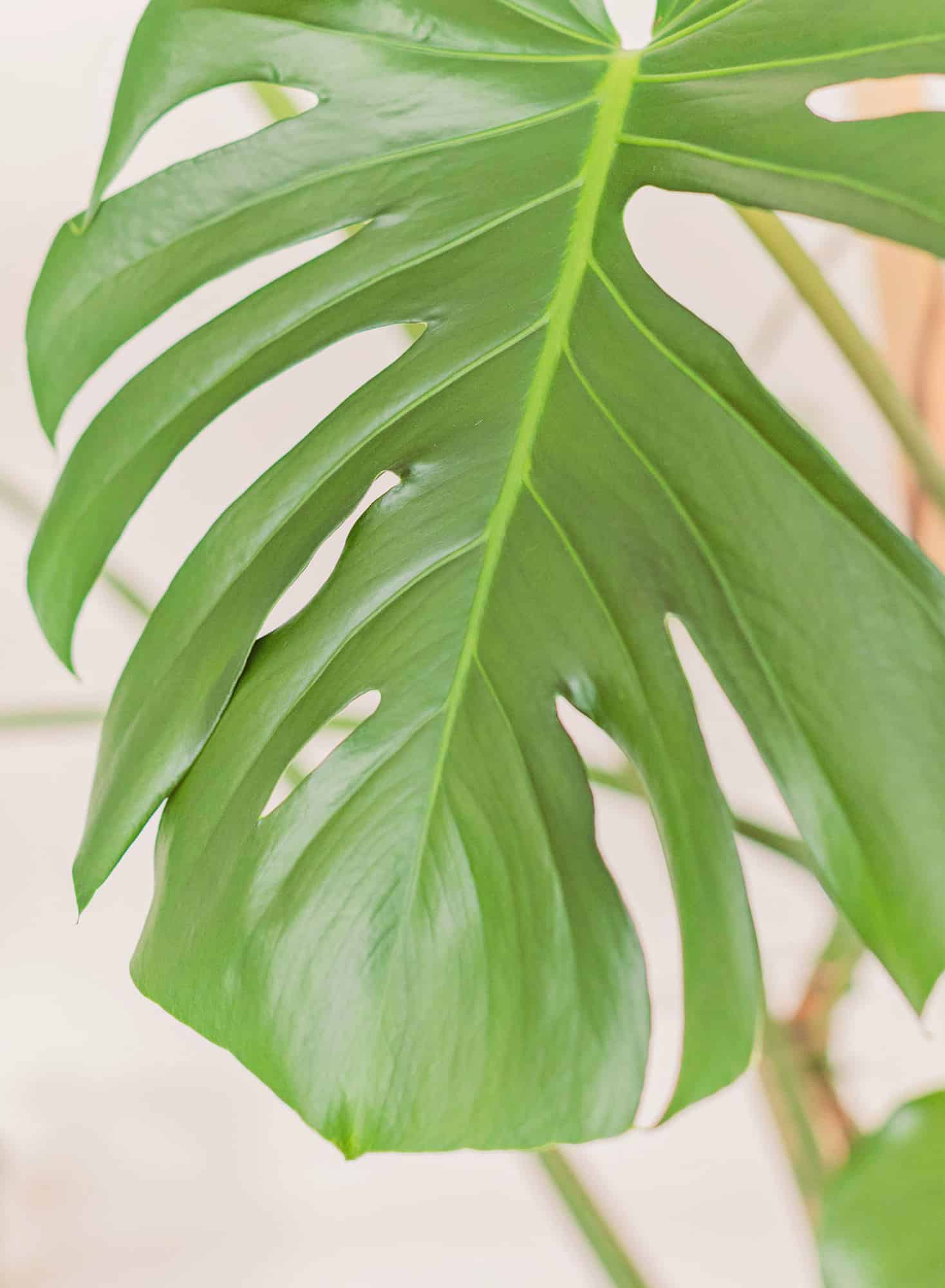
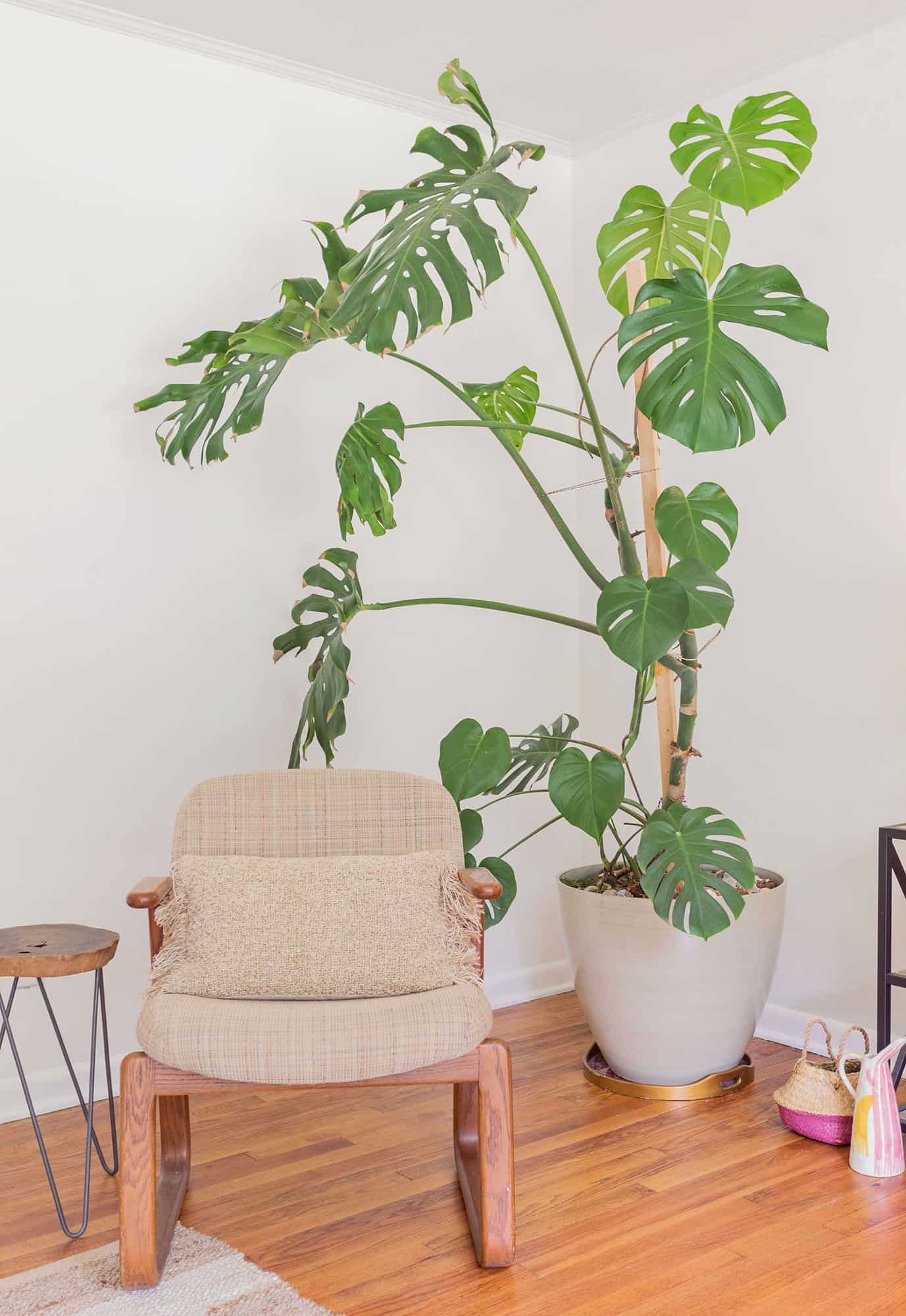
My last and final tip is a little odd and may come across as “woo-woo” to some, but I kind of believe in going above and beyond to add a little love to my plants, and Fran is no exception.
Not only did I name her and give her the best seat in my house, but I placed moss on the top of her soil as well as various rocks and seashells I have found on some of my travels throughout the years.
Collecting rocks and shells has always been a “thing” for me, but I find placing them on top of my plants’ soil sends a little extra boost of love to the plant, (or at least it does in my head), and it makes the plant look even prettier and adds a special touch!
That’s it for my tricks on how I got Fran to go from Sad-but-Giant-Monstera to Gorgeous-OMG-knock-my-socks-off-Giant-Monstera!
I hope you find something useful in all that I’ve learned in taking care of her! Feel free to add any tips or tricks you know of in taking care of Monsteras in the comments! -Michelle
Love plants? Find more plant care tips and other tutorials in our plants archive.


